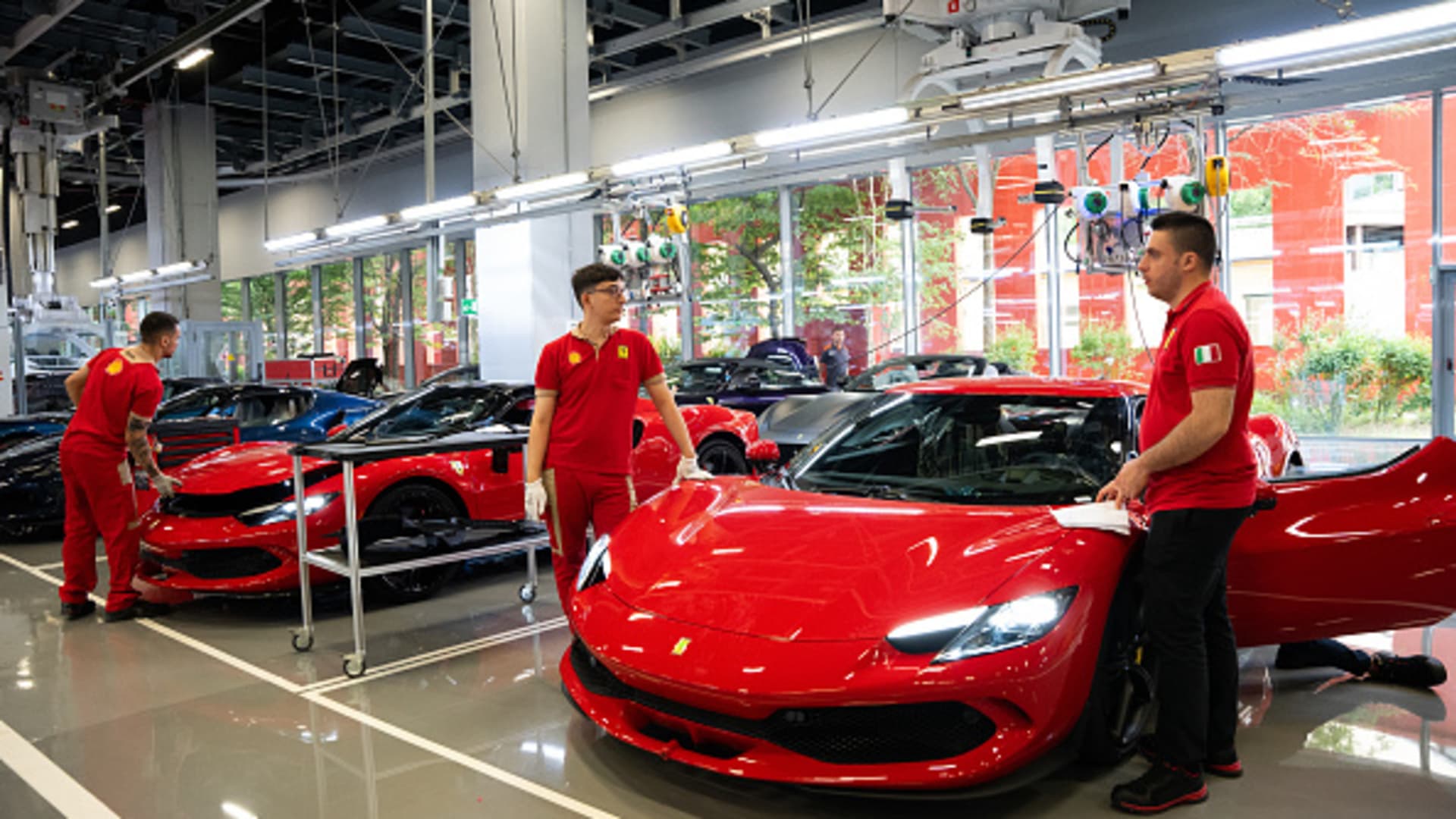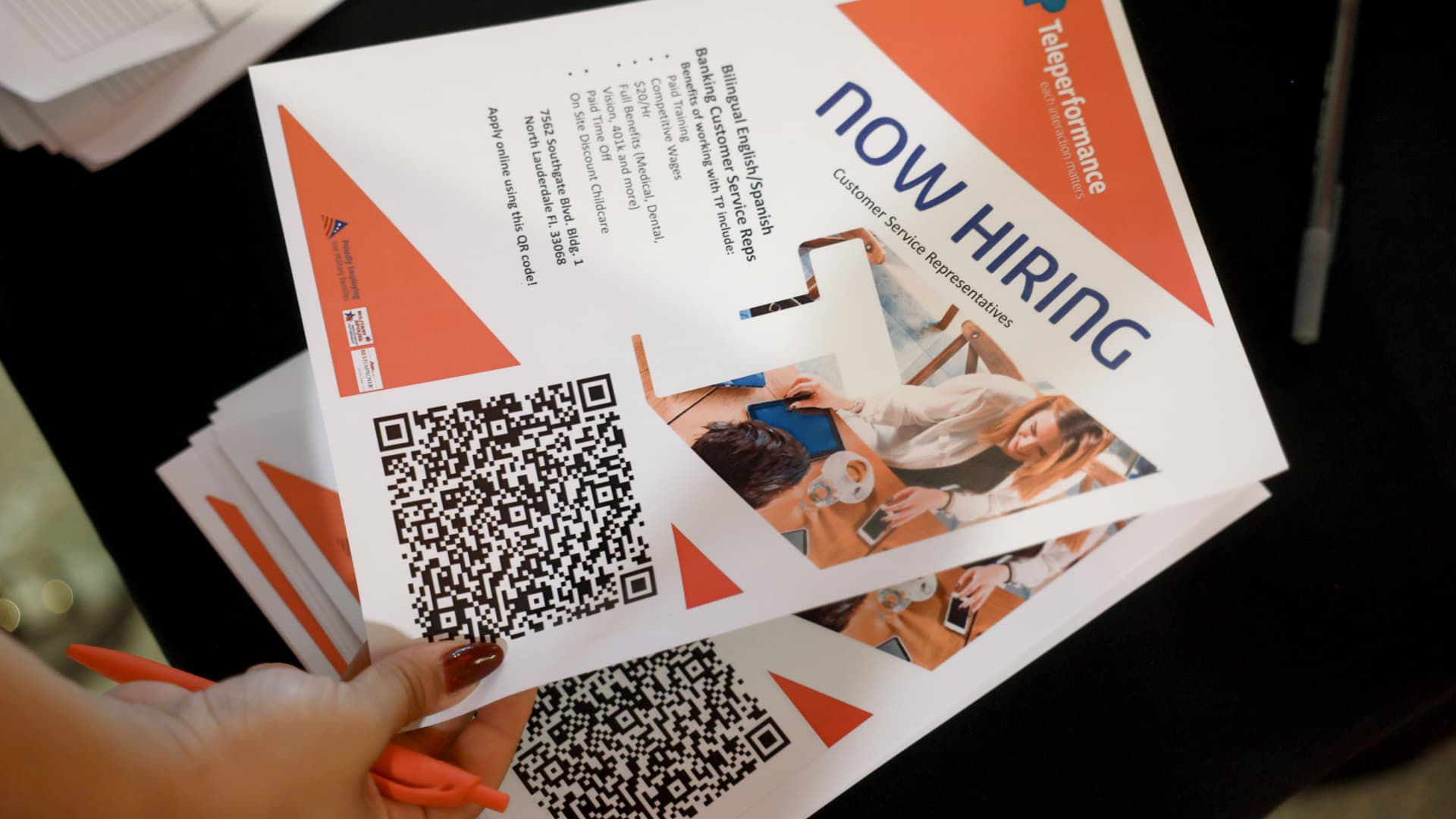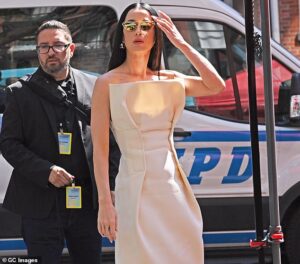Ferrari’s success as a luxury brand comes down to five secrets

In the world of luxury, Hermès is undoubtedly the gold standard.
Its sales are growing by double digits, even as other luxury companies are experiencing dramatic slower growth or declines. Wealthy customers lucky enough to be anointed Birkin bag-worthy can buy a Birkin 25 for around $11,000 and return it the same day for more than $23,000. Analysts predict that Hermès could surpass Louis Vuitton in revenue within the next three years as the world’s largest luxury brand.
Hermès The stock has increased by 13% this year, while LVMH stocks are flat and Kering has decreased by 18%.
However, there is one luxury company that has surpassed Hermès when it comes to growing and maintaining the brand – Ferrari.
This year, Ferrari for the first time it surpassed Hermès as the world’s most valuable luxury company, measured by multiple shares, which measures growth and earnings prospects. Ferrari shares now trade at 50 times earnings, compared to 48 for Hermès and 23 for LVMH.
The iconic automaker, founded in 1947 by Enzo Ferrari as a way to finance his racing team, debuted on the New York Stock Exchange at $60 a share in 2015. It now trades at $410 a share.
The company is valued at more than $75 billion—roughly 1½ times its market cap Ford OR General Motors, which produce millions of cars every year. Ferrari produced just 13,663 cars last year.
Ferrari is not a traditional luxury company, of course. It makes cars and has a racing team, a merchandise company, a car restoration company, and many businesses that bear little resemblance to a manufacturer of $1,300 scarves and $800 sandals.
However, in a recent research report, Bernstein luxury analyst Luca Solca claims that Ferrari and Hermès are similar, as both “occupy the top of the price pyramid” in their categories and are “perfectly positioned”. to benefit from the rise of the global rich.
To better understand what makes Ferrari a luxury brand, CNBC traveled to Ferrari’s headquarters in Maranello, Italy, to interview the company’s CEO, Benedetto Vigna.
Vigna is a king of impossible luxury. He spent most of his career at Geneva-based semiconductor manufacturer STMicroelectronics, where he led its microelectromechanical systems and sensors group. He helped create the screen sensor technology used in the iPhone, for example.
His appointment to the top job at Ferrari in 2021 was a sign that technology would be central to the supercar maker’s growth and, in a sense, the future of luxury.
In an interview at the company’s $200 million E-Building, Vigna talked about the upcoming electric Ferrari, his commitment to sustainability and the current global demand for Ferraris.
The main topic of conversation, however, was what makes Ferrari a leader in luxury and what lessons other companies and executives serving affluent customers could learn from its rise. Here are five main ways:
1. Play hard to get
Ferrari Pureblood SUV
Adam Jeffery | CNBC
As Solca points out in his research note, Ferrari and Hermès both “sell less than the market would take.” A lot less.
Based on orders, analysts estimate Ferrari could easily sell two or three times its current output. Ferrari’s allure was built on scarcity and exclusivity.
Even if you can afford a Ferrari, with an average price of $380,000, securing an order is nearly impossible.
The wait time for a Purosangue, Ferrari’s pseudo-SUV and other hot models is now up to three years, the longest in its history. Ask any Ferrari dealer about their biggest problem and they’ll say, “Not enough cars, too many frustrated customers.”
But CEO Vigna said the absence is part of the Ferrari brand promise.
“We have to stay true to our founders’ strategy, which is to always sell a car for less than the market is asking for.”
His strategy is to increase profit by making more of each machine, rather than making more machines.
“We always want to push quality of revenue over quantity,” he said.
Indeed, the increase in Ferrari production over the years has lagged far behind the increase in potential wealthy buyers. In 2010, it produced 6,573 cars, which means that over the past 14 years, production has doubled. Over the same period, the global population of billionaires has tripled (and so has the population of those worth $30 million+ and $100 million+).
Vigna said that seeing a Ferrari on the road should be like seeing a rare and exotic animal. The imbalance also gives Ferrari a unique position in the automotive world: cars typically appreciate in value over time.
Vigna said if customers have to wait for one, so much the better.
“The wait is part of the experience,” he said.
During CNBC’s visit to the factory, a Ferrari customer took delivery of a new brown 812 Superfast. He appeared to be in his 70s or 80s. When he saw the car and posed with it under the Ferrari entrance gates, his face lit up and transformed into a 10-year-old on Christmas morning.
Ferraris are special because they are still special.
2. Make the driver excited
The Ferrari SP38 was spotted at the 2022 Goodwood Festival of Speed on June 23 in Chichester, England.
Martyn Lucy | Getty Images
Ask any Ferrari fan or owner what makes a Ferrari a Ferrari, and they might say design, engine sound, handling, power, braking, or the 100-year history of racing behind that bright yellow badge.
Vigna says that a true luxury product is defined by one key characteristic: emotion.
“Ferrari is a luxury company because it is a company that is offering a unique product. It is connecting with the innermost part of people, the emotional side,” he said. “A luxury company is a company that uses technology, innovation, storytelling, heritage, everything, with the ultimate goal of nurturing that emotional side that we all have.”
Vigna said that Ferrari will never produce vehicles that people need simply for transportation.
“When I get invitations to speak at conferences, I won’t attend if I hear two words — utility or mobility. We don’t make a useful product. We make an emotional product,” he told CNBC.
It’s similar to what LVMH Chairman Bernard Arnault refers to as “desirability.” It is not enough to make a high quality product, or an expensive product or one with more features or functions. It should tug at the heartstrings.
3. The art of prices
A Ferrari under development at the supercar maker’s E-Building in Maranello, Italy.
Crystal Lau | CNBC
Based on Ferrari’s soaring prices, you’d think the price is driven by profit demands and Wall Street’s obsession with margin expansion.
However, Vigna said the base price for each model is actually set about a month before its launch – in an unusual process.
“The way we determine price in our company is very simple,” he said. “A month before the car is ready for unveiling, we go to the track – me and a few people – and drive it for a day or a day and a half. And then with fresh emotions in our bodies, we determine the Jam price me, the CMO and the CFO setting the price.
It is clear that these emotions are growing. The cheapest Ferrari in 2012 was the California, with a manufacturer’s suggested retail price of $195,000. Today’s entry-level Ferrari, the Roma, starts at $273,000, or 40% more.
Ferrari is launching more limited cars and special editions that command much higher prices: the SF90 XX Stradale starts at around $900,000, and all 799 coupes and open-top Spiders were sold when it was revealed. The SP3 Daytona, with just 599 units, starts at $2.3 million.
Perhaps the biggest driver for profits is customization. Today’s Ferrari buyers increasingly want custom colors, leather, fabrics, stitching, exposed carbon fiber and other personal details that make it their own. These personal touches can add anywhere from $100,000 to $500,000 to the sale price.
Vigna said its “value over volume” strategy meant Ferrari could grow double-digit profits with only modest increases in cars made.
4. Path to VIP status
Ferrari would never admit it, but dealers will tell you that customers have to go through an expensive commercial ladder to get access to new and especially limited edition Ferraris.
It’s similar to the path that Rolex buyers must follow to eventually acquire a new Daytona, or Hermès customers must follow to ultimately acquire a Birkin.
In short, start by buying a basic (and sometimes less popular) model. Then you can buy a slightly more desirable model, or two or three. If you attend Ferrari events, show support for the brand, even join a Ferrari racing program, you can eventually qualify for more expensive and even limited edition models.
Nearly three-quarters of all Ferraris are sold to existing customers. Which means starting at the bottom of the ladder is difficult.
“Ferrari and Hermès reserve their most desirable products for their most loyal customers,” said Solca. “This actually ‘packages’ access and increases desirability.”
5. Happy employees mean happier customers
Workers at the new Ferrari NV E construction plant in Maranello, Italy, Friday, June 21, 2024. The Maranello site, built over the past two years in complete secrecy, will make Ferrari’s first EV from the end of 2025 alongside hybrid models and cars powered by combustion engines. Photo: Francesca Volpi/Bloomberg via Getty Images
Franceska Volpi Bloomberg | Getty Images
Luxury companies often reflect the growing inequality in the economy. Even well-paid and respected employees work every day to make products they will never be able to afford or experience.
Vigna has sought to connect these two worlds.
Shortly after becoming CEO, he discovered that many Ferrari employees had never driven a Ferrari. The company brought employees to the test track to take a ride and get a first-hand appreciation of the importance of their work.
Last year, he also announced an employee share ownership program, giving each employee the opportunity to become a Ferrari shareholder by receiving a one-off grant of shares, free of charge, worth up to around €2,065 ($2,229).
While common in the US, employee stock programs are rare in Europe. Vigna said he learned to appreciate employee stock plans — and the importance of employees sharing in shareholder benefits — while working in Silicon Valley.
“This proposal came from the team and was immediately approved by me and the board,” he said. “People are the center of the company. You have to motivate everyone. If you give shares, they all feel part of the company, like owners of the company. All companies have people. Only some companies are made of people.”
Sign up to receive future issues of Inside Wealth in your inbox.











Post Comment